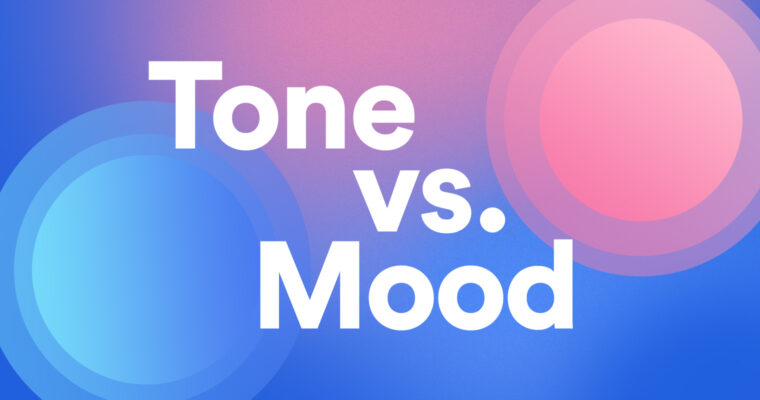
Tone and mood might sound exactly the same to you. But when you’re writing, they accomplish different things.
What’s the difference between tone and mood?
Tone is something you’re likely to think about every day, but you may not have to worry about mood unless you read or write a lot of fiction or creative non-fiction. So, while they may seem like similar concepts, their purposes are quite different.
What is tone in writing?
There are different types of tone, but because we’re talking about mood, we’ll stick to tone in writing, not tone of voice.
As we’ve covered in several other posts, tone in writing consists of the attitude that’s conveyed by your word choice, punctuation, sentence structure, and other nuances. Every sentence you read and write has its own tone.
Putting a period at the end of a sentence in an informal text chain with your friend may have them wondering if you’re mad at them. Exclamation points may help convey excitement or alarm. Shorter sentences may convey annoyance, while longer ones may convey anxiety or lack of confidence.
Example of tone in writing
Think about when you send an important email to your boss that needs a simple response. Which of these responses would you rather get from them?
Grammarly also has a tone detector that helps you figure out how your words might come off to your recipient. This is especially important in work emails, where it’s very important for you to send the right message.
What is mood in writing?
Mood, on the other hand, is the vibe that a larger chunk of text gives you. Think of descriptions of spooky locales in thriller novels, or how a writer describes realizing that they were in love.
Example of mood in writing
Take the first description of the titular estate in Emily Brontë’s Wuthering Heights:
Wuthering Heights is the name of Mr. Heathcliff’s dwelling. ‘Wuthering’ being a significant provincial adjective, descriptive of the atmospheric tumult to which its station is exposed in stormy weather. Pure, bracing ventilation they must have up there at all times, indeed: one may guess the power of the north wind blowing over the edge, by the excessive slant of a few stunted firs at the end of the house; and by a range of gaunt thorns all stretching their limbs one way, as if craving alms of the sun. Happily, the architect had foresight to build it strong: the narrow windows are deeply set in the wall, and the corners defended with large jutting stones.
The description of Wuthering Heights and its surrounding weather provide you with a mood: windswept, out of control, dark, creepy. This is a mood that persists throughout the narration of all scenes set at Wuthering Heights. Tone plays a part here, too, but mostly in the ways the characters and the narrator speak, rather than the overall feeling you get when you’re reading.
Now that you have a primer, see if you can notice tone when you write, and notice mood when you read.






